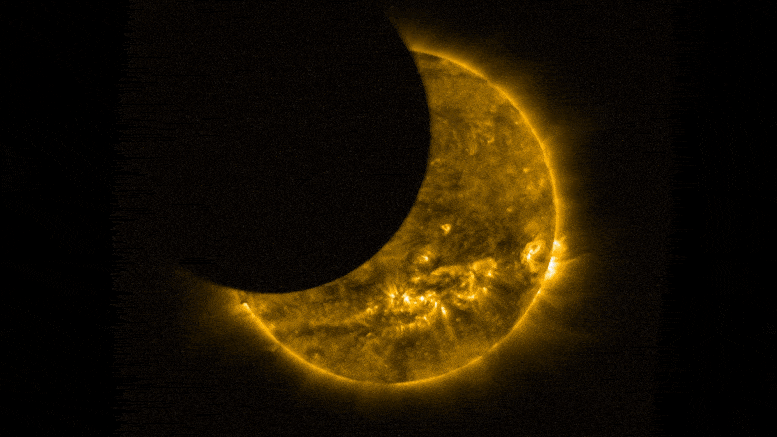The partial solar eclipse of October 25, 2022 was visible from the entire Northern Hemisphere, but one spacecraft, permanently observing the Sun, saw it during its two orbits around Earth

ESA's Proba-2 sun-observing spacecraft photographed two partial solar eclipses on October 25, 2022.
Proba-2 is the second spacecraft in the series, building on the nearly eight years of successful experience of Proba-1. Proba is an acronym in English for Project for On-Board Autonomy. Probe satellites are among the smallest ever flown by the European Space Agency (ESA), but they are advancing space technology.
A solar eclipse is caused by the movement of the moon around the earth. From our vantage point on Earth, the Moon and the Sun occupy the same spatial angle. Occasionally, the Moon passes in front of the Sun, blocking its light, so that part of the Earth's surface is in the Moon's shadow. The position is not always perfect (sometimes the moon tilts slightly north or south of the imaginary line connecting the earth to the sun, so not every eclipse is a total solar eclipse.
On October 25, only part of the Sun's light is blocked by the Moon, creating a partial eclipse. It was visible from most of Europe, North Africa, the Middle East and parts of Asia, with the moon blocking 82% of sunlight near the North Pole. In Europe, up to 40% of the sunlight was hidden during the event (in Israel about 30%).
This partial eclipse was observed by the European Space Agency's (ESA) Proba-2 spacecraft from its unique vantage point in space. Its SWAP instrument studies the Sun in extreme ultraviolet (EUV) light, where it focuses on the Sun's corona - the Sun's hot and turbulent atmosphere - where temperatures reach about a million degrees. The crown is visible in the background of this video.
For us on Earth, the Moon only passes in front of the Sun once during a solar eclipse. Since Proba-2 orbits the Earth in about 100 minutes, it was able to observe this eclipse not once but twice. In addition, the Moon was first observed as it crossed the field of view in the upper right corner, but did not block sunlight 10:30 UTC was interrupted when Proba-2 experienced an occultation. Such obscuration occurs when Proba-2 flies through Earth's atmosphere and the SWAP tool is inactive. The second partial eclipse was captured around 12:25 UTC. The embedded video above shows both defects.
ESA's Sun Observing spacecraft monitors the sun's behavior to better understand the effect of space "weather" on our home planet. The Solar Orbiter mission led by ESA, in partnership with NASA, is orbiting the Sun closer than ever and will provide the first high-resolution images of the Sun's poles. Meanwhile, ESA Vigil will be the first spacecraft to continuously monitor space "weather" events (solar storms) to better protect vital infrastructure on Earth and in orbit.
Image Caption: PROBA English acronym for Autonomous Satellite Project Proba satellites are among the smallest ever flown by ESA, but their impact on the advancement of space technology is great.. Proba-2 is the second in the series, and it builds on nearly eight years of successful experience in Proba-1. Credit: ESA
Image caption 2 The size of the Proba-2 satellite is 0.6 × 0.6 × 0.8 meters. It is a box-shaped structure with two deployable solar panels and a nominal weight of 130 kg. The main mechanical structure consists of three aluminum honeycomb panels arranged in an H configuration and a bottom panel that serves as an interface to the launch vehicle. Almost all satellite system units are mounted on these inner panels. Credit: ESA/Pierre Caril
